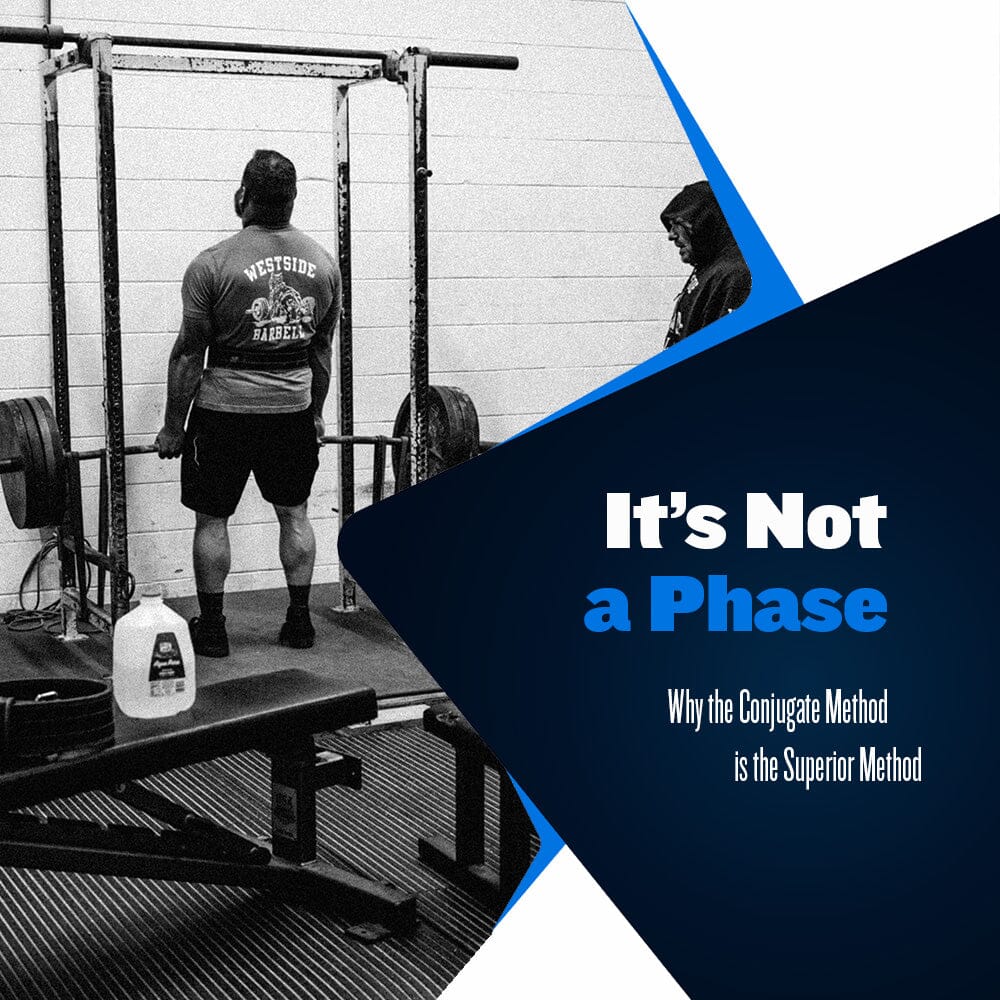It’s Not a Phase
1 Comment

The effectiveness of the Conjugate Method can be attributed to the system's ability to address the most important aspects of strength every week. This is in opposition to linear-style periodization, which uses long-term phases (6-12 weeks) to develop a particular aspect of strength.
Phase training is impractical for a couple of reasons, mainly detraining. Phase training will always lead to detraining as the athlete transitions from phase to phase. This means that you will lose a percentage of the gains you attained in the previous phase due to a lack of focus on that particular strength in the current phase. Essentially, you trade proficiency in one strength for another.
This leads to peaks and valleys as far as how you develop strength. During one phase, absolute strength may be high while the overall volume of your program is lowered. This leads the athlete to eventually transition into a hypertrophy-focused phase to gain muscle mass and improve overall fitness levels.
As you can see, that puts you in a situation where you will inevitably have to trade in some absolute or speed strength to improve your muscle mass. After all, if you do not focus on developing a specific strength regularly, that strength will begin to degrade to a certain degree. If you don't use a strength, you lose the strength.
Don’t Underestimate Athletes
The idea that you must solely focus on one aspect of strength for a specific length of time is flawed and tremendously underestimates the human body's capabilities. Too often, a coach underestimates the human body's capacity and durability and opts to utilize outdated approaches thinking they are keeping their athletes safe from overtraining. In reality, their athletes are less prepared and at an increased risk of injury.
At Westside, we have long understood phase training is a thing of the past. The Conjugate System emerged as a solution to the failings of linear-style periodization. We choose to utilize methodologies that provide us with the greatest yields in strength, speed, and athletic performance.
Conjugate training develops absolute strength, speed, and muscle mass every week. Max effort training days focus on improving absolute strength for the upper and lower body. Dynamic effort training days improve an athlete's rate of force development and explosive power. Our accessory training is hypertrophy-focused; it builds muscle, addresses weaknesses, and raises overall fitness levels.
So, in one training day, we will focus on absolute strength and muscular hypertrophy or speed strength and muscular hypertrophy. Each day we are getting bigger, stronger, and faster without worrying about detraining and losing athletic capabilities. No need for phases, just intelligently programmed and organized training days.
It’s a Matter of Intent and Execution
The success of a Conjugate program will always come down to your ability to regulate your volume, intensity, and frequency, as well as your ability to make intelligent exercise selections. Additionally, the coach and athlete need to understand the intent and execution of each training methodology we utilize.
Your body does not need to hyper-focus on one aspect of strength to maximize results or remain injury-free. Instead, the athlete develops much faster and to a higher level when focusing on training multiple strengths simultaneously. Instead of following a method that charts in a peaks and valleys manner, we want to follow a methodology that charts in a stair-step manner.
Being strong is not a phase. Being fast is not a phase. Being durable and gaining muscle mass is not a phase. As an athlete, if you wish to reach the highest level of performance, you must possess all of these attributes on a regular and consistent basis - especially on gameday. You only have so much training time each year; the method you choose cannot waste gains or time. Linear is the ball, and Conjugate is the sword.
Sources:
Simmons, L. (2007). Westside Barbell Book of Methods. Westside Barbell.
Verkhoshansky, Y., & Siff, M. C. (2009). Supertraining. Verkhoshansky.




